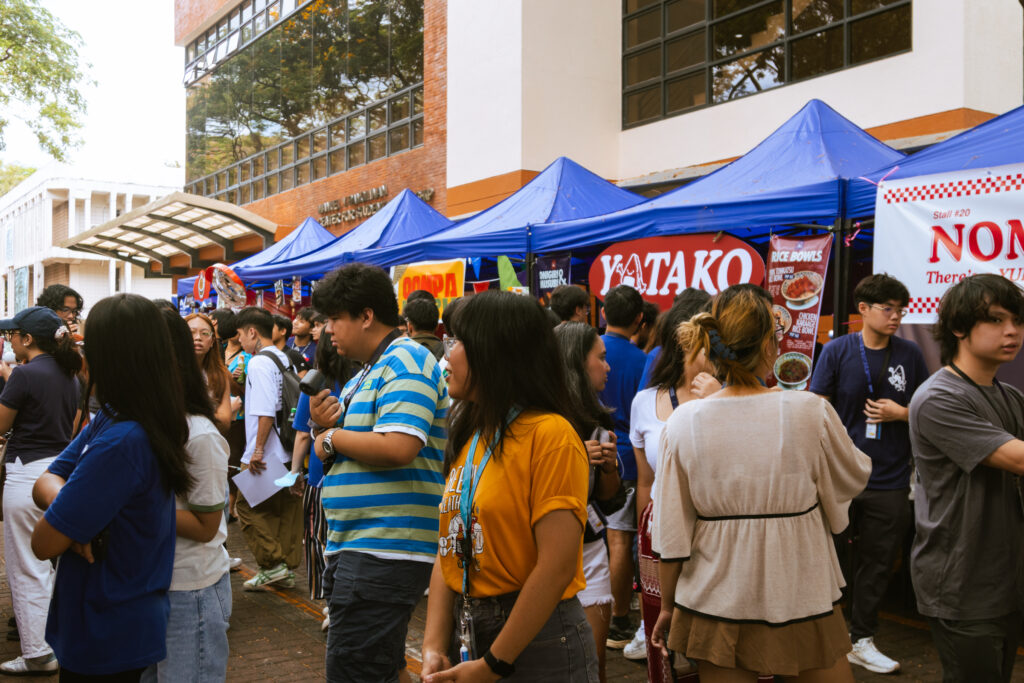It’s ironic how food—something so universally revered—can still be taken for granted. Often, it’s the simple pleasures of life that we miss the most when they’re finally gone. And yes, food, like most things, has a lifespan.
Sometimes a relative may fail to pass down a treasured recipe, or a favorite restaurant may unfortunately decide to close down. Whatever the case may be, each of us will eventually experience such a loss; a loss that will be deeply felt for the rest of one’s life.
This effect of food on us should come as no surprise. Food is often laced with subtle, yet significant meaning because of the associations built by our senses with the things we experience around us while eating. The dishes we love then become aspects of our own identities. So when they’re gone, we can’t help but feel like we’ve lost a part of ourselves.
To explore this further, Vantage talked to three members of the Ateneo community who are willing to share their experiences with their respective dishes that got away. Each account is unique in their own right, but all are tied together by the longing for dishes that are now long gone.
Bianca Ermac
Bianca Ermac (3 AB COM) grew up surrounded by all kinds of food. Since Ermac’s mother was a cook and restauranteur, she and her siblings would always have dishes—both new and old—to sample. But of all those dishes, sopa de ajo or garlic soup stood out.
The soup, a Spanish recipe made with garlic and bread, reminds her of two things: Her family and her province, Negros Occidental. “If there was anything that was very culturally foundational as a Negrense, then I would have to say it was this sopa de ajo,” shares Ermac.
Negrense cuisine is rooted in both Filipino and Spanish culture, and the soup’s recipe was passed on. It initially came from Ermac’s grandmother before her mother learned it, cooking the soup for the family whenever they were sick or if the weather was cold.
As she grew older and her mother focused more on their restaurant, the dish was eventually forgotten in their household. “The sopa de ajo was really just something that [my mother] would cook quickly for us, when we needed comfort food,” says Ermac. “The more that she built her restaurant menu… [the more] it departed from her memory.”
Ermac and her mother just recently cooked the dish together—years after it disappeared from her meal rotation—and she immediately felt nostalgic. “It’s just soup, you know, but it was something that we ate when we bonded,” she explains. “It’s just a very bittersweet feeling. I guess because I think the number one thing that really comes to mind is the time that we were complete as a family.”
Due to the COVID-19 pandemic, Ermac hasn’t seen her brothers for over a year, and her father is also away working in Cebu.
Her childhood in Negros is now a distant memory, but food acts as emotional trigger that helps Ermac remember. “I think humans as we are, we associate memories to sense and to flavors,” she says. “It doesn’t necessarily have to be a memory like a picturesque memory, but just a feeling—like a feeling of being comforted or a feeling of warmth.”
Crane Padilla
Crane Padilla (4 BS MGT) didn’t expect that his grandmother’s tapa would mean so much to him. Nanay Rosa, as his family would call her, brought the family together through this mealtime staple and it has colored their experiences of food even after she had passed. To this day, his childhood memories of the dish are as clear as ever.
He vividly remembers a particular morning when he was still in grade school. His parents were out of town, and he was too young to cook, so it was Nanay Rosa who woke up at 5:00 AM to prepare breakfast.
Padilla says that she cooked her version of tapa just like this: She would start with a cold pan, place the meat inside, then cover it after turning on the stove. This slow cooking process would take about 20 minutes. The volume of the meat would shrink, but they were rewarded with a tapa that tasted unlike any other. They did not forget about the rice too, by the way. The bits of meat that caramelized and stuck to the pan were mixed in with the rice, leaving nothing wasted.
The small things she did for her grandchildren left a mark on them, and is part of why their family is so tightly-knit. In their house, Nanay Rosa’s room now has become more of a living room where the cousins hang out. Because of this, he feels as if she’s not gone; rather, simply on a vacation. “Even when she’s physically gone, it’s still there: Yung presence niya that brings people together in our house,” Padilla says.
The closeness of his family is intertwined with his meaningful experiences of food, Padilla explains proudly. Recounting the memories of Nanay Rosa left him a bit surprised to be so sentimental all of a sudden.
“Food is the language that everyone speaks, [and] the most important thing for me is the people you share [the food] with. Food shared with others [makes] memories that are unforgettable—kahit na sobrang simpleng dish lang siya na niluto ng lola mo (even if it’s just a simple dish from your grandmother).”
Roy Agustin
As an avid cook and general lover of all things food, recreating dishes has never been a problem for English Professor Roy Agustin. One dish, however, has always eluded him: His grand-tita-in-law’s baked macaroni. “One of the dishes that has stood out to me in my life was this Baked Macaroni made by my wife’s grand-tita,” Agustin recalls. “For some reason, she made this really, really good version of the dish, and apparently what she used to make it really good was spam. So basically, it was baked macaroni with chicken and spam. I’ve tried to recreate it, but I couldn’t. I’d have to eat it again, which I can’t.”
Lola Pabalan, as she’s called in the family, was never able to pass down the recipe of the dish before her untimely passing due to illness. In his last memory of eating the dish, Agustin recalls asking Lola Pabalan for the recipe.
“I remember the last time we went to visit her, which was shortly before she passed. We were seated in the living room, chatting, catching up [Lola Pabalan] then left for a little bit and came back with this corral of Baked Macaroni. She then called us over to the table, gave us some slices of untoasted bread and then we dug in. I remember thinking, ‘I have to learn to make this’ while I was eating it because it was so good. I remember asking her for the recipe and she said she would give it. But she never did.”
To this day, the memory of the baked macaroni and Lola Pabalan remains with Agustin. “Of course, part of the frustration is not being able to reproduce it the way I remember it. Another part of it are the memories associated with [Lola Pabalan],” Agustin says. “It’s weird. Core memories are strange. I don’t know how you choose them. I mean, I’m sure I’ve eaten better dishes, pero wala. Yun yung pinili. There’s just something about the dish that made my brain decide it’s important,” he shares.
Ultimately, Agustin has come to expect the sensations and memories associated with food. Whether we notice it or not, the food we’ve eaten in our lives are deeply woven into the fabric of our memories, and thus our identities. “My enjoyment of food is in the whole experience of it: The pleasure of eating it and also the pleasure of the experience around the food,” Agustin shares.
At the end of the day, the overall experience of enjoying food is more than plates on the table. Much of it involves the process and the people, making these disappearing dishes more than just sums of their ingredients. “Really, my only vice is food,” Agustin says good-naturedly. “So when I’m cooking for someone or I’m eating at someone’s house—that’s my enjoyment.”






